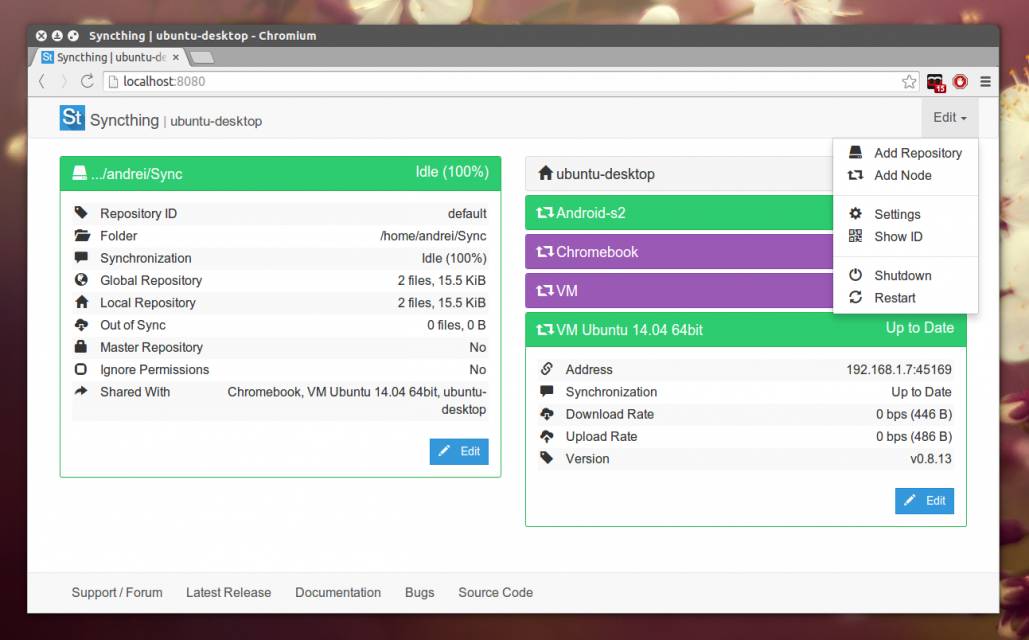

**.SeedVaultAndroidBackup (also added later) **Aurora (added later because Aurora Store temp files were getting lost) So, still in the Add Folder settings, I had to go to the Ignore Patterns tab and tell it to ignore both folders with the following two lines: But, by choosing the root of the user data folder, the app had problems with the Android/data folder and the Android/obb folder (both are part of that root directory, but, apparently don't want to give access to SyncThing). If I had set up individual, specific folders to sync, I probably wouldn't have run into this. Here's where I ran into the first of my issues. On the Sharing tab, I selected my computer. I then did an Add Folder on the phone and on the General tab, changed the Folder Label to what I wanted, left the Folder ID alone (this is what SyncThing uses to figure out what's what across devices), and changed the Folder Path to be the root of my phone's user data (/storage/emulated/0). Since I wanted to share entire, existing folder trees (/storage/emulated/0 on my phone (basically, all user data)), I deleted the default folder (I think it was Camera on the phone, but don't remember what it was on the computer). One of my more troublesome areas was setting up shared folders. I had to go to Actions > Show ID on the remote device to see which one to choose. Because Local Discovery was turned on, it presented me with a list of possible devices to use.

On each device, I went to the Remote Devices section of the GUI and told it to Add Remote Device. Then, I let SyncThing on my phone and on my computer know about each other. And, as a final Settings change, on the General tab, I changed the "Default Folder Path" to something close to where I actually wanted it to be (in my case, mnt/DataDrive/Sync). Since I was there, I also went to the GUI tab and made sure the "Use HTTPS for GUI" option was turned on (thus ensuring all traffic between the devices' GUIs is encrypted). So, I went to Settings > Connections and turned off "Enable NAT Traversal," "Global Discovery" and "Enable Relaying" (leaving only "Local Discovery" turned on). So, I didn't want to leave the app's default connections to the project's means of finding devices across the internet turned on. On my Linux Mint 20.1 Cinnamon machine, I could get it through UFW with:Īgain, I'm only syncing at home and don't have any of my internal network exposed to the internet. Since I ran into a few issues setting it up, I thought I'd document what I've done here.įirst, if you have a firewall running on your PC, you'll need to let Syncthing through it. I'm only syncing when I'm at home in range of my home WiFi network. In my case, for my computer, I installed it via the Debian/Ubuntu Packages section of:
#UBUNTU INSTALL SYNCTHING ANDROID#
I'm using SyncThing to sync the user data on my de-Googled Android phone with my computer.


 0 kommentar(er)
0 kommentar(er)
